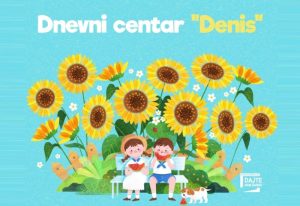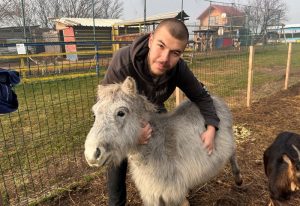Today I want to share something that really changed my perspective on everyday communication – the power of words and how with the help of a few simple tricks you can improve your skills and improve your relationships with others.
A few months ago, I had the opportunity to attend a ten-day peace camp in Strasbourg, where I was introduced to something called the language of the giraffe . Although we learned various techniques of nonviolent communication, it was this concept that made the biggest impression on me, because it helped me develop better relationships with people and approach conversations more calmly.
What exactly is a giraffe’s tongue?
The language of the giraffe is a way of communication that teaches you to pay attention not only to your feelings and needs, but also to how others perceive the situation. The key is that, instead of reacting impulsively, stop, feel what’s really bothering you, and express it in a way that will help the other person understand you better.
You may be wondering why it is called “the tongue of the giraffe”. The giraffe is the animal with the biggest heart among land mammals, which symbolizes empathy in communication – a way to communicate from the heart, with a lot of understanding and attention. Her long neck also represents the ability to see the bigger picture in conflicts , as well as to see the situation from different angles. This symbolism reminds us to be generous and compassionate in our conversations.

How can you start using giraffe language?
Imagine that a classic situation happens to you – you are talking to someone, but you have the feeling that they are not listening to you at all. Instead of immediately saying, “You never listen to me!”, you can use giraffe language and say something like, “I feel neglected because it’s important to me that we pay attention to each other when we talk. ” Here you expressed your feelings, without accusation . You will see how much such an approach changes the course of the conversation .
Giraffe language consists of four basic steps. These steps help you to be aware of your feelings and needs, but also to better connect with others. Here’s how it works:
- Observing the situation
The first step is to objectively observe what is happening in a certain situation , without adding personal opinions or judgments. It’s about recognizing facts, not interpretations. For example, instead of saying, “You’re always late!”, you could say, “I noticed you came half an hour late today.” - Recognizing Feelings
The next step is to express your true feelings. Instead of using accusatory phrases or judgment, try to recognize exactly how you feel. For example, instead of “You’re driving me crazy!” you can say: “I feel frustrated because we agreed on a certain time.” - Expressing Needs
The third step is about understanding and expressing your needs. Here you focus on what you actually need , instead of blaming the other person. Instead of saying, “You never listen to me!” you can say, “I need us to pay more attention to each other when we’re talking.” - Setting a clear request
The last step is setting a request that is concrete and achievable . Instead of vague or indirect sentences, say exactly what you want done. For example, instead of, “Could you consider it?”, say, “Can you be on time next time?”

Listening is key. Many think that expressing yourself is enough, but the real power comes when you really hear the other person. By asking open-ended questions, you show that you care about their opinion.
Be clear in your speech. Instead of long sentences, directly say what you want. Non-verbal communication, such as body language and tone of voice , are also important. By creating a pleasant atmosphere, you encourage people to talk to you. Empathy helps create a deeper connection. Try to understand the other person’s feelings; that way they will feel that you care.
All of these techniques take practice. He is not afraid to start a conversation, be it in a cafe or at work. The more you practice, the better you will be at applying these skills.
Adopting the language of the giraffe is not only a tool for avoiding conflict, but a way to create deeper and more honest connections with the people around you. However, don’t be afraid to say NO when necessary . Below I leave you a video by Marshall Rosenberg , an American psychologist and the founder of nonviolent communication , which will help you learn how to say NO using the language of the giraffe.
If you are interested in further steps in the development of communication skills, explore the content on the Rolify page that will certainly help you on your way to personal and professional development.
Source: rolify.com





